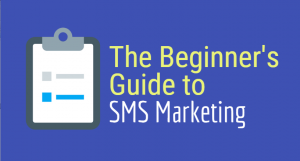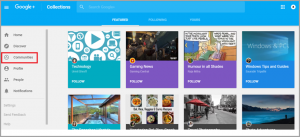Plus, exploring the new normal of how marketers manage their work
Marketing Land’s daily brief features daily insights, news, tips, and essential bits of wisdom for today’s digital marketer. If you would like to read this before the rest of the internet does, sign up here to get it delivered to your inbox daily.
Good morning, Marketers, and we have an important survey for you.
You’ll find this real quick survey below: How marketers manage their work today. I hope we don’t push too many surveys your way, but they really help us to understand the real world of what marketers are doing and the technology they’re using. Without these correctives, it’s too easy to get trapped in a speculation bubble, talking to various visionaries about what the world of martech should be like.
There’s a place for both, of course. When the future is so uncertain — except that it will involve rapid, challenging change — then it’s hard not to spend time pondering it. But right now we need to know: How do you actually run your workflow? Please help us out.
Kim Davis
Editorial Director
IBM Watson adds creative optimization to OTT, video
Since IBM Watson introduced its Advertising Accelerator in early 2020, brands like Toyota and Best Western have used the AI platform to deliver ads with optimized creative elements for display advertising. Now, Watson has expanded its AI-powered creative optimization capabilities to campaigns on OTT services and for online video.
The new video capabilities use data signals to select the best combination of video ad elements for an audience segment on OTT. By incorporating conversions and other signals into the campaign’s modeling, advertisers can also discover new segments to target.
“We launched our Accelerator in order to reinvent DCO (dynamic creative optimization), now for video and OTT, so that the time to value is shrunken significantly,” said David Olesnevich, head of product at IBM Watson Advertising. “AI is backing and powering the campaign with constant learning.”
To launch an optimized video campaign, the advertiser supplies a number of options for each section of a video ad, including assets for introduction, the body of the ad, music tracks and end cards. These are assembled at scale to deliver the right combinations to each of the audience segments that is most receptive to them. As a result, the campaign learns more and drives better results over time.
For display advertising, Accelerator campaigns have achieved a 60% reduction in cost per lead, according to Olesnevich. “We expect it to have the same results if not better [for OTT and video],” he said. “There are more opportunities to help brands, when you think about the assets that they have for video and how we can make use of those assets. We can take what they originally launched with and turn that into a bunch of new variants and drive performances.”
Brands that are already producing video assets across many digital and social channels can plug in versions of these assets and see what works best, as a campaign using AI learns more and evolves.
How marketers manage their work today: The new normal
Large companies have begun to announce back-to-the-office plans and it’s clear that the new work habits accelerated by COVID are here to stay. Already, many companies — including Google, Microsoft and Facebook but also more traditional players like JPMorgan Chase and Ford Motor Company — have said they’ll let many employees work from home at least part of the time going forward.
These developments underscore the importance of the tools we use to connect with colleagues, clients, etc. when we’re separated geographically. One fundamental type of platform we’re relying on is now being called, by many, a marketing work management platform (MWM), and these tools are poised to become indispensable.
That’s why we covered tools for managing marketing work in our Martech Intelligence Report last year, and why we’re currently updating our report to reflect the current players and state of the game. We urge you to help us do that by filling out a very brief (mostly box-ticking) survey and telling us how you manage your marketing work these days. (Pretty please!) We’re eager to hear about it and plan to include the results in the summer update to that report.
The real-world impact of keyword stuffing in Google My Business
Keyword stuffing has been a hot topic in the Google My Business world for a long time. Keyword stuffing or “adding descriptors” to your name on Google My Business is when someone adds words to their business name on GMB that aren’t part of that business’s actual legal name.
We also know that Google historically and presently takes action on GMB profiles that engage in adding “unnecessary” or “unreasonable” descriptors that don’t match the business’s real-world name.
What we have been observing over the last year is that some verticals, but mainly law firms, are experiencing what contributor Colan Nielsen refers to as a “local SEO phenomenon.” Law firms are legitimately rebranding in order to get keywords into their GMB name without violating Google’s terms.
But this is causing a completely separate ranking issue: Once you get to a point where the entire market is adding descriptors to their actual business names, the ranking power that the keywords provided will diminish — and you’re left with a branding nightmare.
Quote of the day
“According to a new IAB Europe research, 75% of Europeans would choose today’s experience of the internet over an internet without targeted ads.” Virginie Goupilleau, founder, The Attention Economy
Marketing Land – Internet Marketing News, Strategies & Tips
(34)
Report Post








